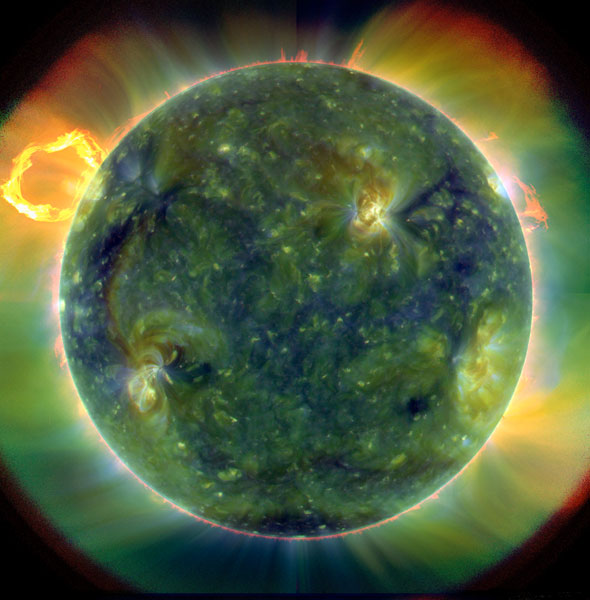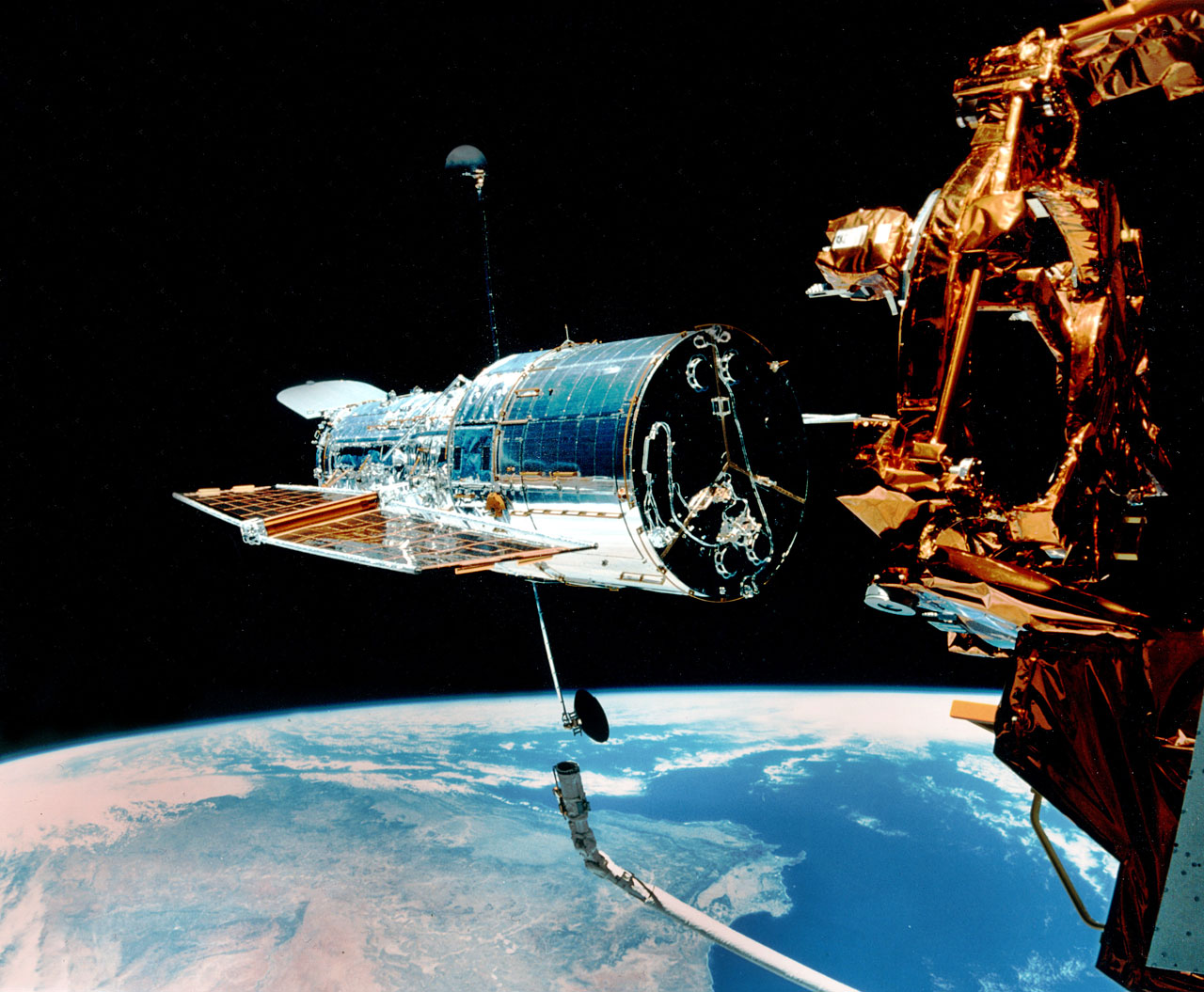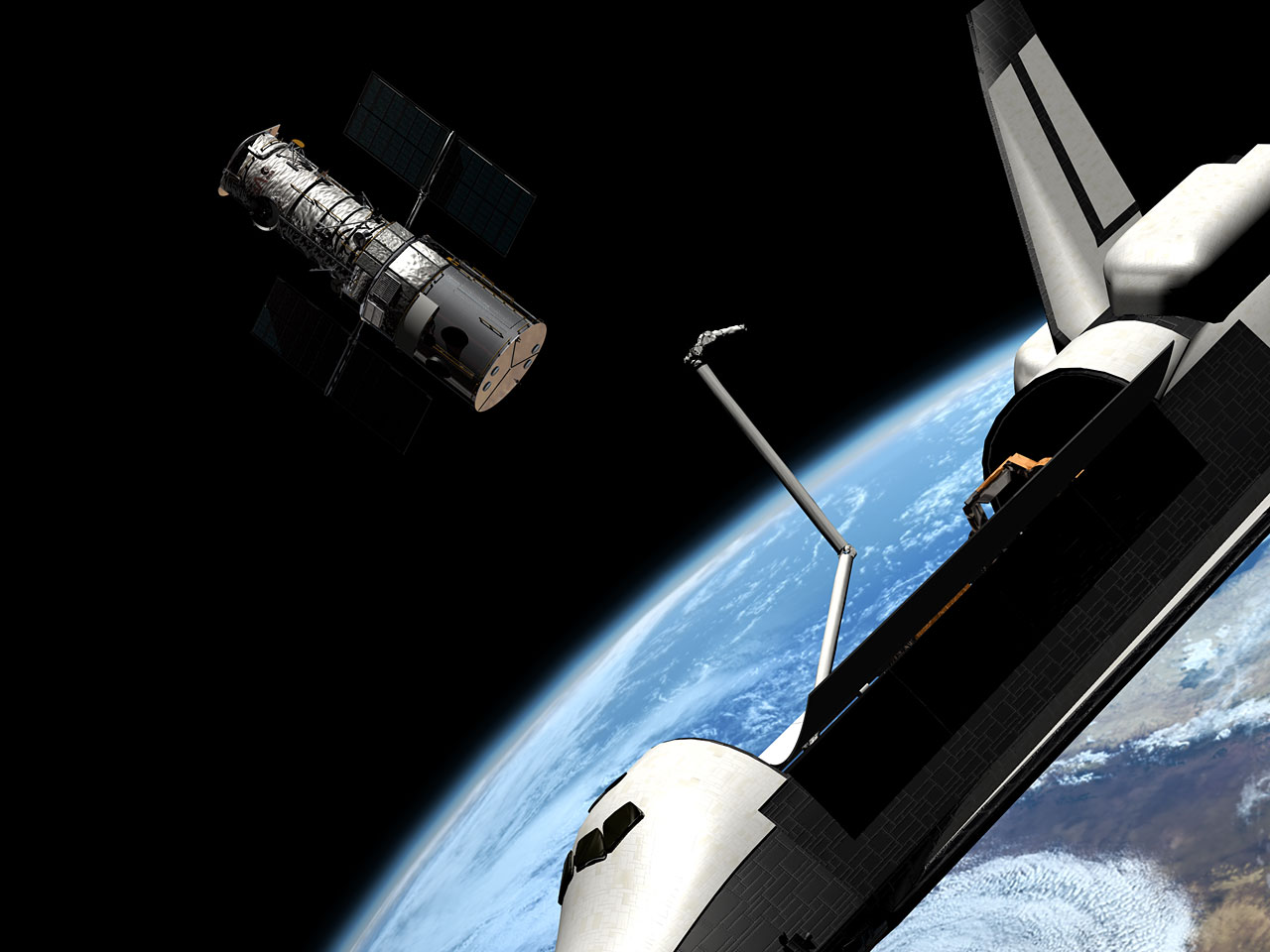Discovery News
OUR WEIRD UNIVERSE NOT AS 'CONSTANT' AS WE THOUGHT
Analysis by Nicole Gugliucci, May 10, 2010

There are some things in life that we just expect to be the same. The fundamental constants of physics, such as the speed of light, the strength of gravity, the mass of a certain particle, are just some things we've learned to accept as given. However, there is tantalizing evidence that favors the hypothesis that these so-called constants change with time, thanks to some clever techniques used by radio astronomers. Theoretical physicists have been trying to come up with a "theory of everything" for some time now, and we hear about efforts to do so, such as string theory.
These models make predictions that can only be detected with energies much higher than any device we can dream of today, so they lie mostly out of the range of scientific testability. There is however one piece of evidence that we can search for today, a changing of the values of fundamental constants over the lifetime of the universe. Who is well suited to look back that far in time? Astronomers, of course! Since distant galaxies are SO far away, we see their light as it was emitted millions or billions of years ago, and can thus look back into time.
 ANALYSIS: Can life exist in alternate universes? By tweaking the fundamental constants of nature, 'multiverse' life might be possible.
ANALYSIS: Can life exist in alternate universes? By tweaking the fundamental constants of nature, 'multiverse' life might be possible.
This is what astronomers Nissim Kanekar, Jayaram Chengalur, and Tapasi Ghosh have tried. They looked at one of my favorite galaxies, PKS 1413+135, and detected the OH molecule (containing an oxygen and a hydrogen atom -- a.k.a. hydroxide) in both emission and absorption. This means that the molecule both absorbs the surrounding radiation at a specific frequency and emits radiation at a specific frequency, making a "dip" and a "bump" in the spectrum. (An everyday example of spectral lines might be the specific color of a laser, or the single color emitted by neon gas in a sign.)
They looked at the shape of the line, or profile, to determine that the emission and absorption both came from the same gas cloud. This is very important, since you want to test for only changes in the fundamental constants, not the different environments that produced the spectral lines. Then, they measured the redshifts of the lines. As a source of emission moves away from us, which this galaxy is, the spectral line will show up at a longer wavelength, or lower frequency. You can hear redshift of sound (known as the Doppler Effect) as a train speeds past you blowing its horn!
Usually, we assume we know the rest frequency of the line as measured in the lab and can use redshift to measure the motion of the gas or galaxy. Instead, they use the fact that the lines come from the same gas, and thus must move in the same way with respect to us, and determine that the rest frequencies of the lines are slightly different from what we would expect! The wavelength or frequency at which an atom or molecule emits light depends on the fundamental constants of the universe, such as the "fine structure constant," which determines the strength of the electromagnetic force. This keeps the negatively charged electron orbiting around a positively charged atomic nucleus, for example. These observations suggest that some fundamental constant is indeed changing since the time of this galaxy, almost 3 billion years ago.
 - CAPTION: From Kanekar, Chengalur, and Ghosh (2010). The top panel in red shows the absorption line, flipped to look like emission for easy viewing. The middle panel shows the emission line of OH. The Bottom shows the sum of these two, showing they cancel out, or have the same shape. On the left is from Westerbork, the right is from Arecibo.
- CAPTION: From Kanekar, Chengalur, and Ghosh (2010). The top panel in red shows the absorption line, flipped to look like emission for easy viewing. The middle panel shows the emission line of OH. The Bottom shows the sum of these two, showing they cancel out, or have the same shape. On the left is from Westerbork, the right is from Arecibo.
This study joins a list of similar observations that suggest this, but the new technique of finding lines from the same gas cloud reduces a lot of the uncertainty of previous measurements. It was also observed and confirmed with both the Arecibo Radio Telescope in Puerto Rico (pictured top) and the Westerbork Synthesis Radio Telescope in the Netherlands. Is this enough to determine the "theory of everything"? Certainly not, but it does clue us in to the possibility that the universe is indeed more weird that we can imagine.

 > Discovery News Videos about the Sun eruption
> Discovery News Videos about the Sun eruption Related Images (more)
Related Images (more)

 Photos: Hubble & Spitzer Space Telescopes
Photos: Hubble & Spitzer Space Telescopes





 .Scour.com: Hubble Images on the web
.Scour.com: Hubble Images on the web


 >>
>> Slideshow: Space shuttle
Slideshow: Space shuttle